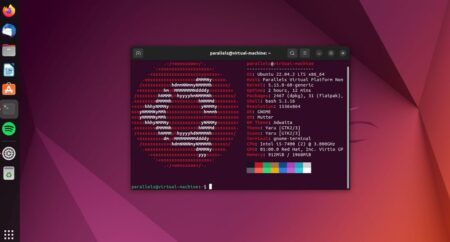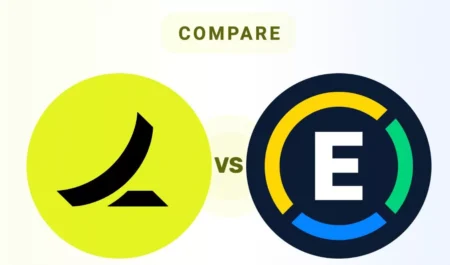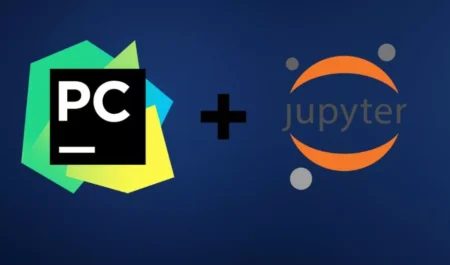1
Imagine you’re a programmer working hard on an app that you want people all over the world to be able to use. You spend hours making it work perfectly, but then you run into a problem: how do you make sure that people who speak different languages and come from different countries will still really connect with your app? This is where tools for localising apps come in handy.
These tools aren’t just useful; you need them. They give developers, translators, and project managers the tools they need to make apps work well for a wide range of users. Imagine that you have the right localization tool in your hands and you can make sure that the translations are correct and the same on all screens and buttons. When you localise something, you do more than just change the words. Customising your app to fit the cultural differences, linguistic quirks, and technology needs of each target market is a complex process.
When you use localization, you’re not just changing your app; you’re making it feel like it was made just for each user. Every little thing counts when it comes to web apps, PC apps, and mobile apps. Language isn’t the only thing that matters; making an app that works well for everyone, everywhere in the world, is even more important. Translation is an important part of the process, but true localization often needs more changes, like tweaking pictures, making visuals better, or fine-tuning text, to really connect with your audience.
What is localization?
Localization involves translation, adapting to cultures, and other factors that affect product perception. It extends beyond translation to adapt the product to the target market’s culture, language, and habits. Businesses that seek to reach clients in other regions must localise. It enables groups personalise customer experiences, which can boost both revenue and engagement.
Language, culture, law, and standards affect localization. It is often part of internationalization and translation-focused globalization. Localization can be done for websites, mobile apps, and software. Businesses can boost income, market share, and client retention by focusing their products.
It quickly gets harder and harder to go through the localization process without any help from software. That’s where translation tools come in to help you expand your business around the world more easily and effectively. You can localise faster and better with them, which will also make your life easier and save you money.
| Feature | Centus | Lokalise | Transifex | Smartling | Phrase |
|---|---|---|---|---|---|
| Target audience | Enterprise-level businesses | SMBs and larger businesses | Developers and small businesses | Enterprise-level businesses | SMBs and larger businesses |
| Key features | Machine translation (MT), terminology management, quality assurance (QA), workflow automation | MT, QA, collaboration tools, integrations | MT, localization workflows, continuous localization (CL), integrations | MT, content delivery network (CDN), integrations, localization analytics | MT, integrations, glossaries, terminology management |
| Pros | Highly customizable, robust features, dedicated account management | User-friendly, transparent pricing, strong API | Developer-friendly, open-source, good community support | Enterprise-grade security, strong machine translation, global network | Affordable, good integrations, focus on collaboration |
| Cons | Expensive, complex interface, limited free plan features | May not be suitable for very large projects | Can be challenging to set up and use for beginners | High price point, may not be necessary for smaller projects | Limited machine translation options, fewer features than some competitors |
| Best for | Companies with complex localization needs, large budgets | Companies looking for a user-friendly and affordable TMS | Developers and small businesses building localized applications | Enterprises with global reach and high-volume localization requirements | Companies seeking collaboration features and affordable plans |
It is typically hard to figure out the return on investment (ROI) on localization because it is project-based and involves marketing, product, and engineering teams all eager to claim a commercial performance improvement as their own. Usually, localization is more important when you’re trying to reach people from a society that is different from your own.
If you want to translate into a Roman alphabet language, you might only need to make small changes to your layout to account for the length of words and sentences. But if you need to use the Cyrillic alphabet, you might have to completely reorganise your user interface.
Centus
| Feature | Description |
|---|---|
| Translation | Efficient translation management |
| Collaboration | Seamless team collaboration |
| Integration | Integration with popular project management tools |
| Analytics | Detailed translation analytics |
| Customization | Tailored solutions for specific project needs |
The strong process automation and collaboration features that Centus offers make it an excellent option for large businesses that are struggling to meet the complex localization requirements. When compared to other available choices, the price of this product is typically on the higher end, which may cause some prospective customers to be hesitant about purchasing it.
The Good
- Streamlined translation process
- Robust collaboration features
- Extensive integration options
The Bad
- Learning curve for new users
- Limited customization for advanced users
Lokalise

| Feature | Description |
|---|---|
| Localization | Comprehensive localization capabilities |
| Automation | Automated translation workflows |
| Version Control | Version control for translations |
| Real-time | Real-time collaboration and updates |
| SDKs | Software development kits for easy integration |
Lokalise, on the other hand, takes great satisfaction in being extremely user-friendly and places an emphasis on visual context in order to simplify the translation process. Lokalise is gaining popularity, particularly among growing enterprises who are trying to scale without breaking the bank. Its extensive translation memory, quality assurance tools, and wallet-friendly price are all contributing factors in this popularity.
The Good
- Powerful localization tools
- Automated workflows save time
- Real-time collaboration enhances productivity
The Bad
- Pricing may be prohibitive for small teams
- Some features require technical expertise to utilize fully
Transifex

| Feature | Description |
|---|---|
| Translation | Advanced translation management |
| Workflow | Customizable translation workflows |
| Glossary | Glossary management for consistent terminology |
| File Formats | Support for various file formats |
| API | API for seamless integration with other tools |
The robust open-source community and developer-friendly API that Transifex provides, in addition to the unrivalled flexibility and customisation choices it provides, are what set it apart from other similar services. Note, however, that its interface may have a steeper learning curve for newbies, and that access to enterprise-grade capabilities often requires a paid subscription. This is something that should be taken into consideration.
The Good
- Robust translation management capabilities
- Flexible workflow customization
- Comprehensive file format support
The Bad
- Interface could be more intuitive
- Steeper learning curve for complex features
Smartling

| Feature | Description |
|---|---|
| Globalization | End-to-end globalization solutions |
| Automation | Automated content translation |
| Quality Control | Built-in quality control mechanisms |
| In-context | In-context translation previews |
| Reporting | Detailed translation performance reporting |
Smartling emerges as a frontrunner for firms who are looking for a smooth interface with marketing automation technologies. The armament that it possesses consists of advanced analytics, content delivery networks, and machine translation, all of which are focused towards increasing automatability and speed. On the other hand, such premium features come with a price tag that is proportional to their expense.
The Good
- Comprehensive globalization solutions
- Automated translation streamlines workflow
- In-context previews improve translation accuracy
The Bad
- Higher pricing compared to competitors
- Advanced features may require additional training
Phrase

| Feature | Description |
|---|---|
| Localization | Simplified localization process |
| Collaboration | Collaboration tools for team projects |
| Version Control | Version control for translation projects |
| Customization | Customizable translation workflows |
| API | API for integration with other tools |
As a result of the fact that Phrase strikes a balance between functionality and price, it is an appealing choice for both large and medium-sized enterprises. The automation of workflows, seamless integrations, and an intuitive interface are its primary characteristics. It is designed to meet the needs of users who place an emphasis on efficiency without sacrificing the quality of the user experience.
The Good
- User-friendly localization interface
- Effective collaboration features
- Flexible customization options
The Bad
- Limited advanced features compared to some competitors
- Pricing may not be suitable for all budgets
Enterprise Content Management (ECM) software is vital for businesses due to several reasons:
- Efficient Information Management: ECM systems allow organizations to store, organize, and manage large volumes of digital content, including documents, images, videos, and other files, in a centralized repository. This makes it easier for employees to find, access, and share information quickly, improving productivity and decision-making processes.
- Compliance and Risk Management: ECM software helps businesses ensure compliance with regulatory requirements and industry standards by providing features such as document version control, access controls, audit trails, and records management. This helps mitigate the risk of non-compliance, fines, legal issues, and reputational damage.
- Enhanced Collaboration: ECM systems facilitate collaboration among employees, teams, and departments by enabling seamless sharing, editing, and co-authoring of documents and other content. Features such as real-time collaboration, document workflows, and integration with collaboration tools enhance teamwork and communication within the organization.
- Improved Customer Experience: ECM software plays a crucial role in delivering a seamless and personalized customer experience by providing easy access to relevant content and information across various channels and touchpoints. This helps businesses engage with customers more effectively, increase customer satisfaction, and build brand loyalty.
- Document Lifecycle Management: ECM systems support the entire document lifecycle, from creation and capture to storage, retrieval, archival, and disposal. This ensures that documents are managed efficiently throughout their lifecycle, reducing redundancy, ensuring accuracy, and optimizing storage space.
- Search and Retrieval Capabilities: ECM software offers robust search and retrieval capabilities, allowing users to quickly find and access the information they need using keywords, metadata, filters, and advanced search functionalities. This improves efficiency, saves time, and enhances user experience.
- Integration with Business Systems: ECM systems integrate seamlessly with other business systems and applications such as ERP, CRM, HRIS, and financial systems, enabling data exchange, workflow automation, and process integration across the organization. This improves data consistency, accuracy, and visibility, leading to better decision-making and business outcomes.
- Scalability and Flexibility: ECM solutions are scalable and flexible, allowing businesses to adapt to changing needs, growth, and technology advancements. Whether a business operates on a small scale or enterprise level, ECM systems can scale to accommodate increasing volumes of content and users while maintaining performance and reliability.
Questions and Answers
What are the tools for localization project manager?
Project managers that are responsible for localization might benefit from using tools such as Asana, Trello, and Jira to better manage resources, organise tasks, and measure progress. Through the use of these platforms, seamless cooperation between team members and stakeholders is made possible.
What are the three types of localization?
Language localization services can be broken down into three primary categories: translation, transcription, and interpreting. In contrast to transcription services, translation services convert the original text into a different language, whereas transcription services generate a copy of the source text that is punctuated and grammatically accurate.
You Might Be Interested In










Leave a Reply